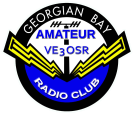
+- GBARC Forum (https://www.gbarc.ca/ForumBB)
+-- Forum: Amateur Radio (https://www.gbarc.ca/ForumBB/forumdisplay.php?fid=5)
+--- Forum: NEWS (https://www.gbarc.ca/ForumBB/forumdisplay.php?fid=23)
+---- Forum: ISED, RAC Bulletins (https://www.gbarc.ca/ForumBB/forumdisplay.php?fid=13)
+---- Thread: RAC Ontario Sections Bulletin for 18 January, 2025 (/showthread.php?tid=1371)
RAC Ontario Sections Bulletin for 18 January, 2025 - Richard VE3OZW - 2025-01-18
RAC Ontario Sections Bulletin for 18 January, 2025
This is V_3___, Official Bulletin Station for Radio Amateurs of Canada
with this week's bulletin.
NATIONAL/INTERNATIONAL NEWS
1. January-February 2025 TCA is now available
The digital (eTCA) version of the January-February 2025 TCA is now available for viewing or download.
The paper version is now at the printer.
To download your copy please visit:
https://www.rac.ca/digitaltca/
-- rac website
2. ARRL Reports DXCC Application Processing Caught Up
DXCC® application processing is back to typical processing times.
In October, we reported that the ARRL DXCC® System had been returned to service following work that was completed to ensure the security and integrity of the system following the cyber-attack in May. Over 4,000 DXCC applications have been logged into the system for processing since returning the system to service.
We are currently processing applications submitted in December, and we continue to mail orders for paper DXCC certificates and endorsement stickers. There were 315 certificates mailed between December 27, 2024, and January 13, 2025.
-- arrl website
3. Ham Radio Operators Serving During California Firestorms
As the firestorms across Southern California continue to threaten millions of residents, trained amateur radio operators are serving critical volunteer roles to help officials spot fires before they get out of control. The Eaton fire burned to the top of Mount Wilson, a critical logistical post for broadcast radio and television stations. Federal agencies, air traffic control, local emergency responders, radio amateurs, and others all share tower space on the mountain. During severe fire weather, volunteers go to preassigned locations to report conditions. Many of them are hams, using the amateur radio bands to fill in commercial mobile network weak zones.
Ray Hutchinson, AE6H, is a retired Firefighter who serves as the chief radio officer for Fire Watch. He says local clubs are key to providing the needed RF infrastructure. “Our local club, provides linked 2-meter and 70-centimeter repeaters: one high level and one coastal, for use by Fire Watch hams during deployments. There is a formal Net Control Station (NCS) for the entirety of these events," he said. Radio amateurs are also ready and able to serve at evacuation centers, providing support as needed.
ARRL Director of Emergency Management Josh Johnston, KE5MHV, has been on calls with the Federal Emergency Management Agency and other served agencies offering ARRL resources. Efforts are being coordinated locally by Emergency Network Los Angeles, the Voluntary Organizations Active in Disaster (VOAD) group in Southern California. Johnston urges hams in the affected regions to be ready to take care of themselves and their families before needing to deploy. “These are stressful events for everyone, and being a ham volunteer is really second to keeping yourself and your family safe,” said Johnston.
-- full article on arrl website news
ONTARIO SECTION NEWS
ITEMS OF INTEREST
4. Remotely Controlled Vehicles Over Starlink
Modern remote control (RC) radios are capable of incredible range, but they’re still only made for line-of-sight use. What if you want to control a vehicle that’s 100s of kilometers away, or even on the other side of the planet? Cellular is an option, but is limited by available infrastructure. But what if you could beam your commands down from space? That’s what Thingify was looking to test when they put together an experimental RC boat using a Starlink Mini for communications.
Physically, it would work on the boat. After all, it was small, light, and power-efficient. But would the network connection be up to the task of controlling the vehicle in real-time? During ground testing, the Mini version of the Starlink receiver worked very well. Despite being roughly 1/4 the size of its predecessor, the smaller unit met or exceeded its performance on bandwidth, latency, and signal strength.
As expected, it also drew far less power: the Mini’s power consumption peaked at around 33 watts, compared to 180 W for the larger receiver.
On the water the bandwidth was more than enough to run a high-resolution video feedback to the command center. At that time, the boat moved autonomously between waypoints, and when Thingify switched over to manual control, the latency was low enough not to be a problem. We wouldn’t recommend manually piloting a high-speed aircraft over Starlink, but for a boat that’s cruising along at 4 km/h, the lag didn’t even come into play. The downside? Starlink is a fairly expensive proposition; you’d need to have a pretty specific mission in mind to justify the cost. The Mini receiver currently costs $599 USD, and you’ll need at least a $50 per month data plan to go with it. While this puts it out of the price range for recreational RC, Thingify notes that it’s not a bad deal if you’re looking to explore uncharted territory.
-- hackaday Blog (Jan 08, 2025 edition)
This concludes this week's bulletin. Does anyone require repeats or clarifications?
Hearing none, This is V_3___ returning the frequency to net control.
Bulletin sent from Official Bulletin Manager VA3PC